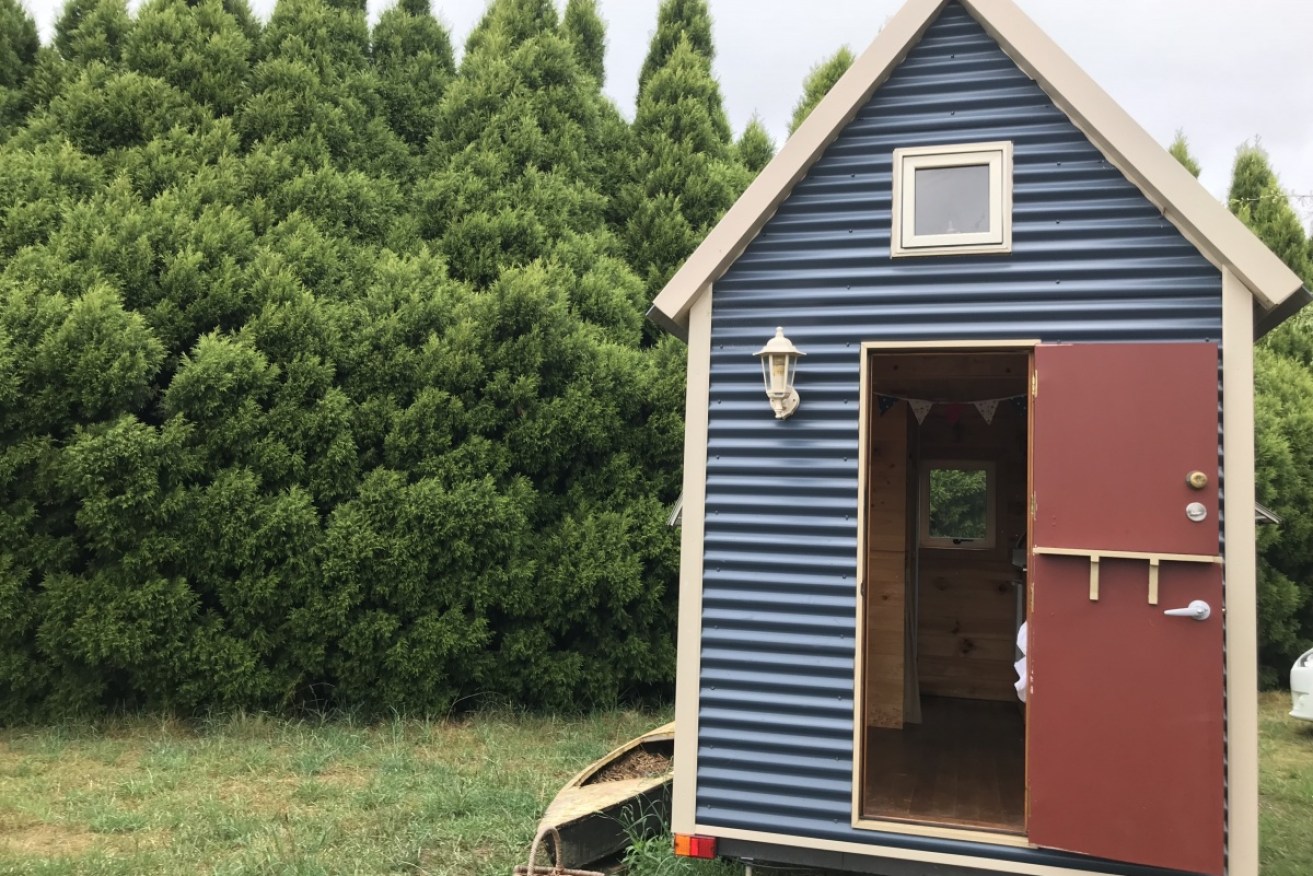The big appeal of tiny houses


When small is beautiful: This tiny house is in Bowral, in the NSW southern highlands. Photo: AAP
They look adorable, have the whimsical, carefree aesthetic of a cubby, and are at the core of a social and political movement that objects to housing trends and prices and embraces sustainability, downsizing and simple living.
The tiny house movement rejects a consumerist lifestyle – where McMansions have cupboards overflowing with unused stuff, the house is so large you need to text the children, and status is gained by buying the biggest, the latest and the most.
But a tiny life is not lived in the mainstream.
“It’s usually a maverick lifestyle with tiny house dwellers living under the radar and not attracting the attention of councils,” devotee Darren Hughes says. “A lot of them hire a bit of land from a farmer or something like that.”
He started Tiny Houses Australia with a Facebook page 5½ years ago, when there was only one person he knew of in Australia building a micro house. The site now has 52,000 followers, and Mr Hughes estimates about 250 people are building or living in a tiny house.

Tiny house goals: The home of Californian architect Vina Lustado. Photo: Facebook/Sol Haus Design
The tiny house movement traces its roots back to the US, after its 2007 housing market collapse. It has spread to most Western countries.
Tiny homes look like diminutive, traditional houses and are built using traditional techniques. A common floor plan puts the sleeping area in a loft and everything else on the ground floor.
The generally accepted definition is a home of less than 46 square metres. Because this is smaller than council planning departments will accept as a permanent dwelling, owners build on trailers. This brings the size down to about 20 square metres.
The homes are then classified as caravans – and regulations restrict the amount of time you can permanently live in a caravan.
As a caravan, the structure needs to meet transport regulations, which restrict it to a width of 2.5 metres, a maximum height of 4.3 metres and a maximum length of 12.5 metres (including the length of the trailer draw bar). House and trailer must weigh less than 4.5 tonnes. Oh, and no bank in Australia will provide a loan to buy or build a tiny house.
Tiny homes are also vulnerable to a cheeky hijack. One downside of having your home on wheels became evident in Canberra in September, when a prototype was stolen.
The distinctive little structure, worth about $20,000 as it was, but $30,000 once plumbing was installed, was spotted in Queensland the next day and police arrested a Canberra man in Hervey Bay. A similar case was reported in Auckland, also in September.
Mr Hughes says the main drivers behind building a tiny home are the costs of buying and running a regular house, wanting to live with a light footprint, wanting to live cheaply while saving for a larger house and, for some, the idea of leaving the rat race behind.
The cost of buying ranges from $55,000 to $120,000, although plenty of people build their own.

Inside a tiny house’s office-living space-kitchen-bathroom. Photo: Facebook/Tiny Houses Australia
There are many challenges to living a simple, low-impact life, not the least being that self-sufficiency means you have to deal with all of your household waste. Arguments might arise about personal space and mess, but they are nothing compared to negotiating whose turn it is to empty the toilet.
Top-of-the-range composting toilets are odourless and need only be emptied about once a month. However, as one forum contributor says: “You have to potty train guests. You have to tell them how to pee and poo.”
Regular toilets can be used but the blackwater tank has to be pumped out regularly, which the forums say is a “truly dreadful job”.
There is no dishwasher, a tiny fridge, probably no washing machine and certainly no dryer. Other challenges mentioned have been the deep penetration of cooking smells into every corner and all clothing, and the lack of a laundry basket because there was simply nowhere to put one.
One person mentioned a hatred of round objects because they can’t be stacked. Another said they put a storage box outside for jumpers and linen. Another watched in horror as the puppy grew … and grew … and grew.
Minimalist living is not for everyone, but if you would like to learn more, the Tiny House Festival will be held in Bendigo, Victoria, on March 23-24, 2019.








